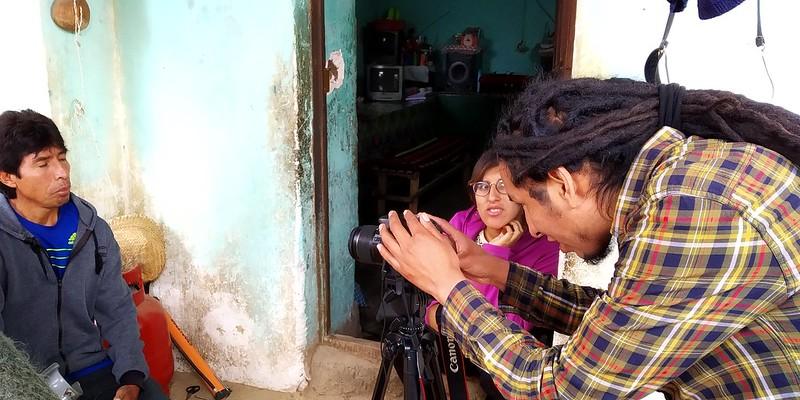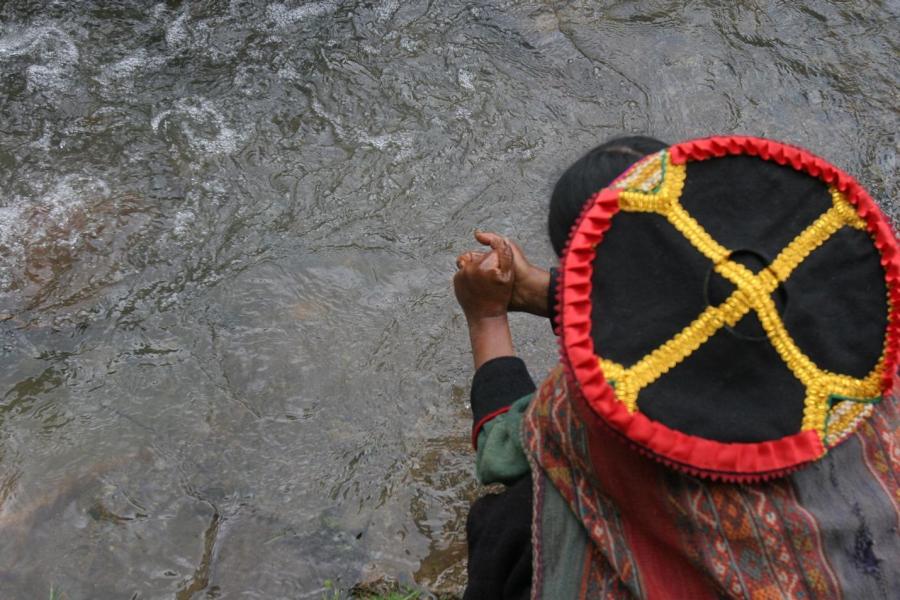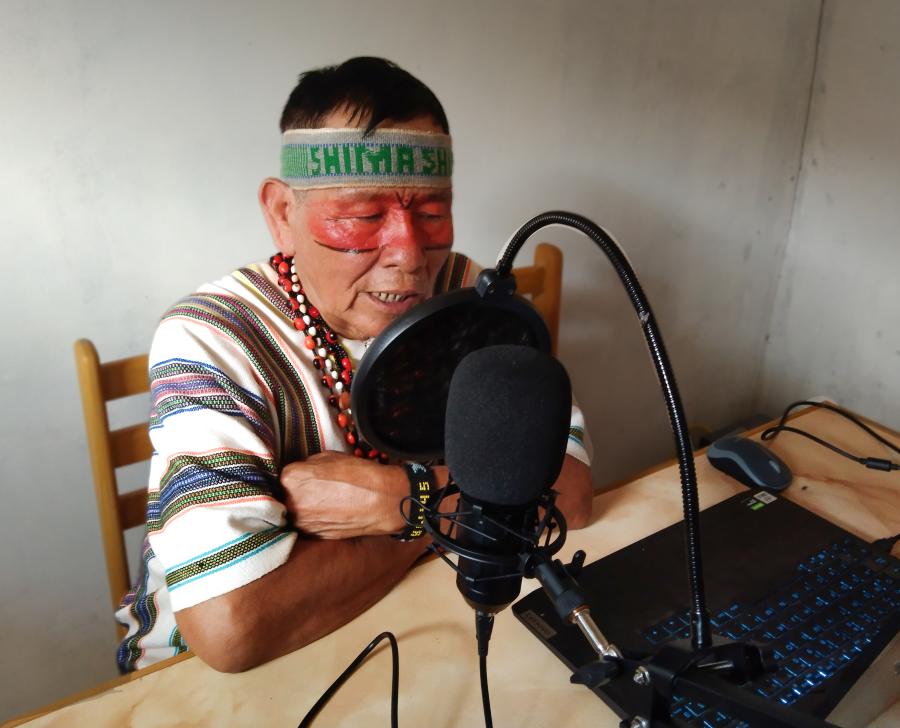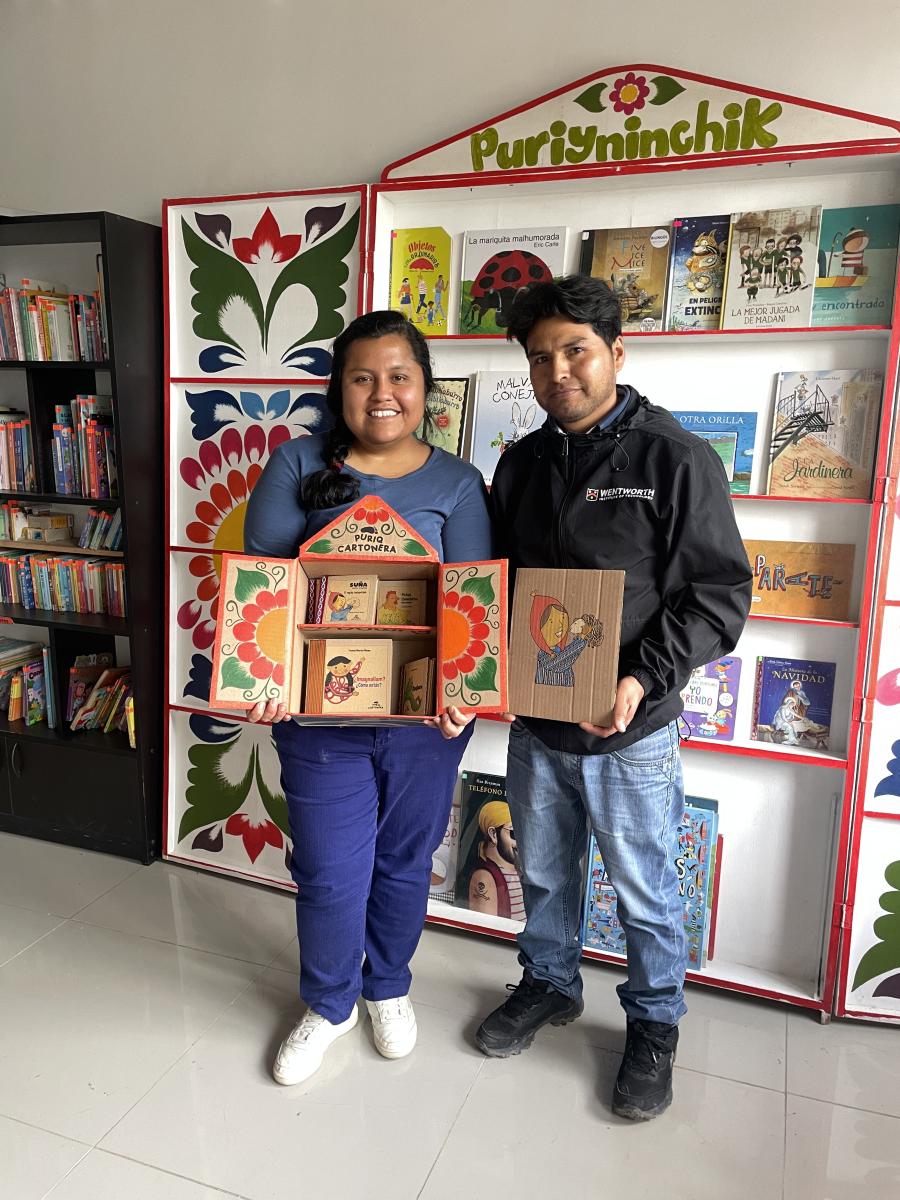
Uniting Rural and Urban Indigenous Communities in Peru
Centro Sapichay is working to unite the rural and urban Indigenous communities of the Wanka, Chanka, Ashaninka, Ya’nesha, Awajun, Kana and Quechua Peoples in Peru through an Indigenous-led rapid response network, AWAY (Quechua for “to weave”). AWAY draws upon shared value systems to support rural communities and facilitate communication between urban and rural members.
Many Indigenous Nations are located in remote areas but also have diasporas in more urban areas. These communities did not have an effective way of communicating quickly with one another and with their Indigenous urban populations. A grant from the Keepers of the Earth Fund to Centro Sapichay helped establish the AWAY Rapid Response Network, organized primarily by the communities in Junin. AWAY is the first network of its kind, a first step to creating an increased sense of solidarity between urban and rural Indigenous communities. The grant supported urban and rural Indigenous people of Peru to stay in contact and to report on and address any urgent issues they are facing, including human rights and environmental rights violations.
According to Paloma Abregu, the executive director of Sapichay, the purpose of this AWAY network is to “quickly disseminate information on events and critical community survival needs, by use of phone trees, websites, and encrypted text.” It creates a way for Indigenous communities to correspond about rights abuses that may be being violated and creates a support network of medical and legal help if they are in need of either. Before AWAY could start being effective, Sapichay organized workshops about tactics for legal defense, technical support in areas of conflict, as well as workshops that informed the rural and urban Indigenous communities about their rights. The project has already shown how effective it can be. Centro Saphichay was able to inform Indigenous communities in urban areas of Peru about a mining contract that was solicited illegally and make both rural and urban communities aware that they have rights to their lands. One participant said, “They should spread this information to more communities, because here we were unaware of many things, the radio did not even inform us about these rights.”
Centro Sapichay wanted to create a way for communities in the Peruvian Andes, central rainforest, and urban areas not only to learn about their rights, but also for the rural communities to learn how to use photography and video equipment, and to utilize an interactive mapping website for all communities to upload information on and communicate about recent conflicts, via the technology TIMBY. The AWAY network has created a newfound relationship and trust between rural and urban Indigenous communities, a sense of unity and belonging for all Indigenous people involved in this project. Centro Sapichay hopes to inspire other Indigenous communities to create similar network systems. AWAY has given a new feeling of strength to communities, especially those located in rural areas and places where people can easily be taken advantage of because of barriers to accessing information. Sapichay intends to nurture this new solidarity in order to advocate for Indigenous rights and raise awareness of human rights violations through social media campaigns.



